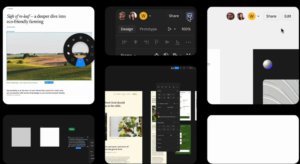
Figma, the website and app design platform, introduced a user interface (UI) redesign and multiple new artificial intelligence (AI) features, on Wednesday. New look UI3 as this is the third significant redesign of the platform since its launch in closed beta in 2016. One AI feature even turns static mocks into interactive prototypes. The new platform and features are being rolled out as a part of a limited beta.
In a blog post, Figma said the older design was “becoming unapproachable to newcomers” and it wanted to introduce new ways to interact with user experience (UX) design elements that did not exist a decade ago. The new Figma UI3 comes with resizable panels and a slim new toolbar at the bottom of the canvas. Another major change has come to the layout options. All options including width, height, and Auto Layout have now been merged into a single panel.
With UI3, users will get backgrounds on inputs, borders around dropdowns, rounded corners, and 200 hand-drawn icons by designer Tim Van Damme.
While the redesign is a significant addition, Figma has also introduced several new AI features to automate and simplify users’ workflows. The suite of features is called Figma AI, and the company is offering these tools for free during the beta period which will continue for the entirety of 2024.
Features are:
Visual Search — It will let users find and reuse designs by uploading an image and selecting an area on the canvas. The feature will also work by entering a text query.
Asset Search — The existing feature will now use AI to understand the semantic meaning and context behind search queries to find the most relevant components and assets.
Content Generation — Users will be able to generate realistic copy and images to fill out the pages to create engaging mockups.
Remove image background — As the name suggests, it will let users isolate subjects from images without the need to switch tools.
Make Prototype — It can turn static mockups into interactive prototypes, allowing users to see the flow of the interface at the ideation level.
Rename Layers — It will let users rename the layers with a single click. The AI will use contextual titles to rename them.
Make Designs — In the Actions panel, it will generate UI layouts and component options using text prompts. This can effectively generate the first draft of the design which can be edited manually.
AI models on Figma-specific design concepts and patterns. For this, it will let the Figma admins decide whether or not their team’s data is used to train the AI. The post further added that this decision will not affect whether or not they can use the AI tools.
